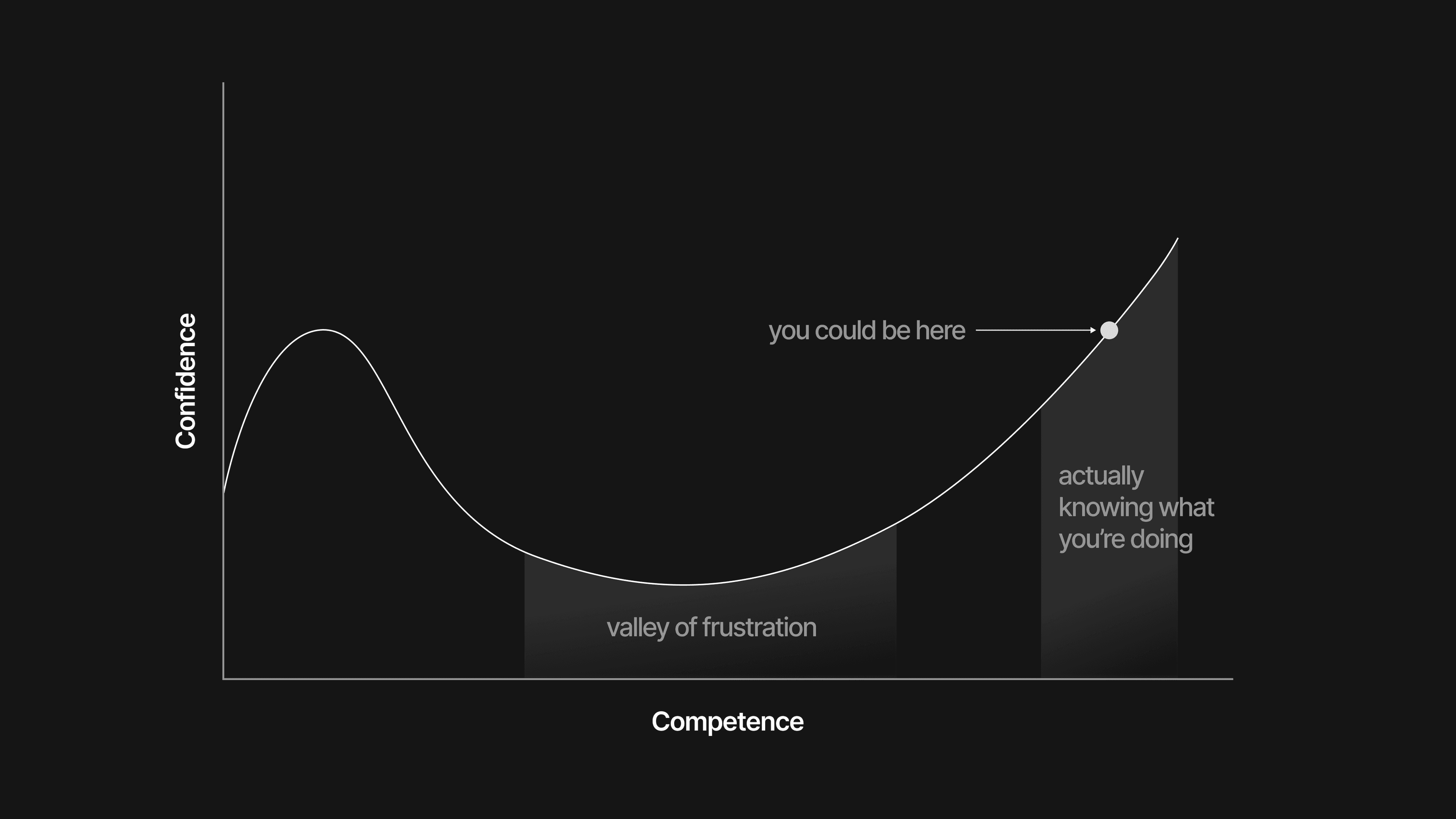Building something basic is easy. Building what you want is where things get tricky.

Building something basic is easy. Building what you want is where things get tricky.
How often do you get ideas? And how often are you compelled to bring those ideas to life? If you've felt this urge, then you have a creator inside you.
Creation isn't limited to software, videos, or tangible products; it can manifest as a poem, a piece of writing, a dance, or a song. Anything you can imagine and diligently work on materializing is the embodiment of your ideas.
Yet, the greatest challenge lies in transforming these brilliant inklings into tangible outputs—an endeavor only a few manage to master.
I, like many, am no stranger to the flood of ideas that often invades the mind. Some ideas I jot down, some I forget, and a few I fully realize. Narrowing down these ideas and committing to building them is where the real struggle begins.
Today, I’ll share how I navigate this creative labyrinth, offering insights that might light your path as well.
The Common Struggles
If I had to guess, I’d say you and I are not so different. We share common fears: fear of judgment, fear of imperfection, and the overwhelming nature of the blank slate that often stifles creativity.
What will people think? What if it's not perfect? What if I can't find the ideas to complete it? These doubts are familiar companions in our creative journeys.
Regardless of our backgrounds—be it in software design and development, writing, painting, or entrepreneurial ventures—we all face these creative uncertainties. Knowing that these feelings are common can provide some comfort and remind us that they're just part of the process.
Tactics to Begin
Let's move beyond our struggles and delve into some actionable strategies that help me and might benefit you as well. The first thing you need is focus. Sounds simple, right?
Distractions are an inevitable part of life. From social media to family demands and societal expectations, numerous elements compete for our attention. Embracing the chaos and finding focus amidst it is what separates ordinary from extraordinary creators.
Here are three strategies to overcome that initial inertia:
-
Brainstorming & Sketching Get your ideas out of your head. Write them down, sketch them out, or record them—whatever helps you visualize them. I often start with pen and paper, then move to digital tools like Figma to further refine these ideas.
-
Setting Small Goals Ambition is great but focusing on achievable, incremental steps will keep you moving forward. For instance, if building a todo app, sketch out the step-by-step plan, focusing on what can realistically be accomplished in the short term.
-
Rituals for Creativity Waiting for the perfect moment or inspiration is a myth. Establish a routine that incorporates dedicated time blocks for you to focus on your projects. For me, that's usually a couple of hours each night when distractions are minimal. Find a time that works for you and stick to it, however brief it might be.
Iterative Improvement
Contentment with your work doesn’t equate to complacency. I often find myself dissatisfied with my initial designs, prompting me to iterate. I usually revise my work three times: once for structure, again for detail enhancement, and a final time for polishing.
Embrace imperfection—nothing is flawless. Instead of seeking validation from others, solicit feedback that challenges you. Ask probing questions that reveal your project's weaknesses. Then, recalibrate and assess your progress, ensuring you are still aligned with your original goals.
Inspirational Success Stories
Let's turn our focus to tech entrepreneurs who started with simple yet relatable ideas that led to transformative impacts. Take the case of Drew Houston, the co-founder of Dropbox. The idea for Dropbox came from a very common problem—Drew kept forgetting his USB flash drive while he was a student at MIT. Frustrated by existing options for file sharing and storage, he decided to create a user-friendly, cloud-based solution. His relentless focus on creating an intuitively simple platform that worked across multiple devices led to the birth of Dropbox, now a multi-billion dollar company that revolutionizes how we store and share files digitally.
Another exemplary tale involves Nick D'Aloisio, who was only fifteen when he created the Summly app, designed to summarize news articles for small screens. His idea was rooted in a common need for quicker and more efficient consumption of news on mobile devices. The app attracted significant attention and was subsequently acquired by Yahoo for $30 million, making D'Aloisio one of the youngest self-made millionaires ever. This story is particularly inspiring because it shows that technological innovation can come from anyone, anywhere, regardless of age, and can address everyday challenges in profoundly simple ways.
Both stories highlight how everyday frustrations or needs, when viewed through a lens of creativity and persistence in the tech world, can lead to industry-changing products and monumental success. These examples remind us that many groundbreaking tech innovations start with solving simple, relatable problems.
Conclusion
Every journey from concept to creation is fraught with doubts, setbacks, and learning curves. Use your struggles as stepping stones and the tactics outlined above as your toolkit. Maintain focus, manage small goals, establish creative rituals, seek constructive feedback, and be ready to iterate. Remember, the journey itself is part of the destination—embrace it with all its imperfections and surprises.
Your next great idea is waiting to be realized. What will you build next?